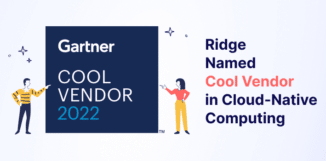Security teams confront issues when organizations migrate their apps and services to multi-cloud environments, ranging from corporate policy to compliance fines as well as risks of new attacks.
Internal and external threats to cloud data security might range from legitimate users misusing data to malicious actors seeking to leverage stolen credentials. Even though businesses and individual users are recognizing the threats and are increasingly implementing security measures like VPNs, cloud computing threat defenses require more scalability.
The Cybernews team had an insightful talk with Jonathan Seelig – the co-founder, Executive Chairman, and Chief Evangelist at Ridge – a distributed cloud platform built upon existing infrastructure. They looked into cloud architecture, its relevance, and rising security threats.

What has your journey been like since your launch? How did it all begin?
I co-founded Ridge with Nir Sheffi and Mati Lerner in 2018. We were all interested in the question of how cloud computing was going to support workloads all over the world. We found it unlikely that all of the new applications being developed in the world were going to run out of a couple of dozen locations operated by a few hyper-scale cloud providers. I was a co-founder of Akamai, where we pioneered the idea of the Content Delivery Network (CDN). We gave content providers a global infrastructure deployed in thousands of locations to improve the performance, reliability, and scalability of their websites. Here at Ridge, together with my co-founders and our team, we set out to enable cloud applications with a similarly distributed cloud architecture. At Ridge, we can customize a cloud to create a presence in any location and any existing infrastructure, thereby changing the way people think about the public cloud.
Do you think the recent global events influenced the way people approach cloud solutions?
Certainly, global events, such as war, lockdowns, and even the occasional AWS outages we’ve seen are making it abundantly clear that our commercial fabric cannot be dependent on a small group of providers.
The way our business-critical applications are built has undergone a dramatic transition in just a few years. It’s now all about rapid assembly and integration. The cloud has been the enabler of this progress and will continue to be the infrastructure on which businesses develop new and innovative applications. But the world is too big of a place and the demand is too great for the hyperscalers to be a complete answer for everybody’s cloud needs. Hence, we’re seeing more and more businesses turning to us as they realize that a distributed cloud is the way to go. Our cloud is particularly distributed because it can run on any existing infrastructure.
Many companies have chosen cloud solutions to enhance security, but is it truly a “one-size-fits-all” option? Are there any details that might be overlooked?
Security is rarely a one-size-fits-all problem. Each industry and each application has its own set of specific concerns that need to be addressed. One thing that many companies forget is that once they choose to utilize proprietary technologies from a cloud provider, they have inherently reduced the flexibility of their cloud architecture. As a result, their security will only be as good as that of the single underlying cloud on which they have deployed. Multicloud architectures and open standards, such as containers and Kubernetes, allow application owners to stay nimble, and therefore potentially more secure.
What are some of the most serious cyberthreats that you think will become a prominent problem in the next few years?
As Mark Twain said, it’s difficult to make predictions, especially about the future. The nature of cyber threats is that the ones that have the biggest impact are the ones we haven’t already thought of. While I can’t predict what the next big cyber threats will be, I can predict that distributed architectures will survive the threat better than centralized architectures.
In your opinion, why do you think certain companies are not even aware of the threats hiding in their own networks?
We have been predicting attacks based on “threats from within” for over a decade now. And yet, the majority of cybersecurity budgets still go to external threats. So, while most companies probably are aware of it, they probably don’t allocate a lot of resources in those directions.
What are some of the best practices organizations should follow when creating cloud-native applications?
There are platforms that are based on proprietary development tools, but developers should find platforms like Ridge, which use specifications such as Kubernetes as part of its cloud environment, and are agnostic to any data center’s underlying physical resources. They can then use modern APIs to programmatically run applications in any location. The key is to be interoperable with any private, hybrid, or multi-cloud architecture and hence, to unlock the vendor locking inherent in cloud infrastructure.
As for individuals, what security measures do you think every casual Internet user should have in place?
Is there still such a thing as a “casual” Internet user? In 2022, I think that one of the most important security elements is simply the lock screen. Phones and computers that are left unlocked or without a passcode are easy targets. Early on at Ridge, if anyone left their device unlocked when they walked away from it, someone else on the team would immediately grab it and send some pretty funny things around to the rest of the team. While it might not be the best lesson out there, it reminds us that covering up the simple vulnerabilities is step 1 in this process.
Share with us, what’s next for Ridge?
Ridge’s cloud is already available in over 150 locations. Over the next year, we will see our footprint continue to grow. We’ll continue to enhance our support of enterprise needs by adding new PoPs to Ridge Cloud and by adding cloud-native services on top of existing and available infrastructure in locations around the world.
Read the original interview here.













